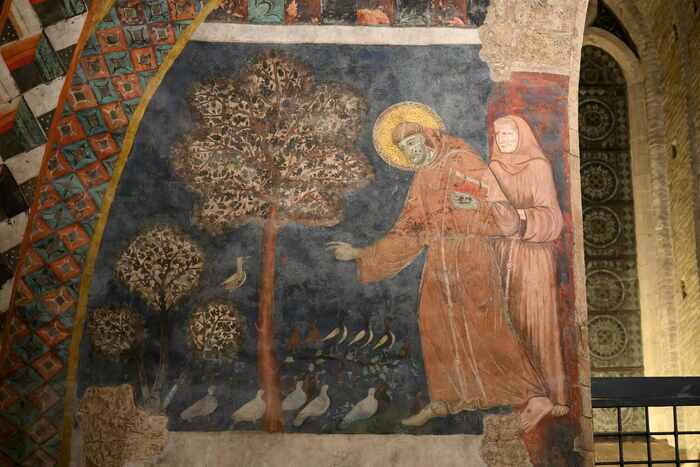The artist who described Saint Francis in the marvelous biography in images created in record time between 1255 and 1260 in the single nave of the Lower Basilica of Assisi has reached the pinnacle of thirteenth-century painting but remains nameless.
The author of that masterpiece and of the stained glass windows in the Upper Basilica, who with the conceptual foundations of Bonaventura da Bagnoregio placed Francis at the center of the project which indicated him as the savior of the Church and of the world, was the protagonist of a radical turning point that was obscured within a short time of Cimabue's arrival on the scene.
''It was the last firework of the Byzantine legacy that will be swept away by Giotto'', says Andrea De Marchi, curator with Veruska Picchiarelli and Emanuele Zappasodi, of the exhibition that the National Gallery of Umbria dedicates to him from 10 March to 9 June, on the occasion of the 800th anniversary of the stigmata of the Saint who died in 1226. ''The enigma of the Master of Saint Francis.
The stil novo of the thirteenth century Umbria'' unfolds between the museum of the capital and Assisi, bringing together for the first time seven of the nine works attributed to the unknown artist and another fifty to contextualize the story, with arrivals of rarities from foreign museums prestigious - Louvre, National Gallery in London, Metropolitan Museum in New York, National Gallery in Washington.
The objective is to ''turn the spotlight on a fundamental turning point in the history of art'' and propose an itinerary in the places where the painter - called at the end of the 1800s by the German scholar Henry Thode ''Master of'' - worked ' as happened with many other artists of the time known for the subjects depicted but not identifiable due to the absence of signature and documentation.
The starting point and fulcrum of the route is the enormous Painted Cross dated 1272, almost five meters long - among the largest with that of Cimabue ever made in Italy - placed at the entrance to the Gnu of which it now represents the symbol.
A breathtaking masterpiece for the splendor of the colors and the beauty of the subject, the crucifix described in his suffering as a man, the body bent on one side, with his eyes closed, the exact opposite of Christ triumphant over death, erect and with his eyes opened from the previous era such as that of San Damiano.
The large Cross, painted for the Perugian church of San Francesco al Prato, referred to the model created in 1236 by Giunta Pisano, preserved in the Porziuncola museum and granted for exhibition with another fundamental panel, Francis between two angels, created by the master of San Francesco on the wooden plank on which, according to tradition, the dead body of the Saint was placed.
Assisi, after the canonization in 1228 and the laying of the foundation stone of the basilica two years later, became an international construction site with the arrival of French and German artists.
In this effervescent climate, the Master spoke about Francis by painting the salient moments of his life on one side of the nave in dialogue with the scenes from the life of Jesus on the opposite side, precisely to strengthen the idea that the poor saint was the New Christ, also by virtue of the stigmata received.
The scenes were a riot of colors and decorations right down to the small mirrors scattered across the blue of the entire vault to simulate, illuminated by torches, the stars in the night.
Today faded colors that only remotely convey the idea of the splendor conceived for the time.
In 2016 a 'special' guest visiting the National Gallery of Umbria in front of the large Crucifix by the Master of San Francesco summarized in a single sentence the key to understanding the exhibition that is about to open: ''Here there is Giunta Pisano but not there is still Cimabue''.
It was not the opinion of a long-time art historian but the admiring comment of the President of the Republic Sergio Mattarella.
Reproduction reserved © Copyright ANSA

